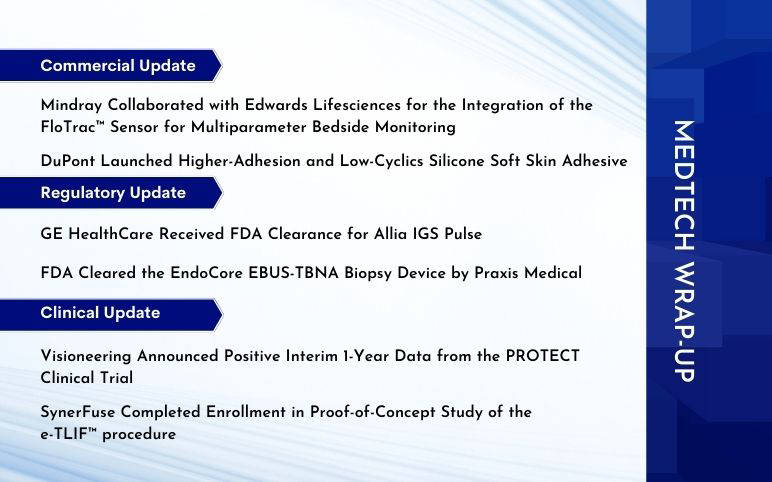Contact Lenses: A Comprehensive Guide to Vision Correction and Beyond
Aug 23, 2023
Table of Contents
Contact lenses have emerged as a groundbreaking innovation within the realm of vision correction, fundamentally reshaping how individuals perceive the world. Serving as an alternative to conventional eyeglasses, contact lenses hold significant value by not only improving visual clarity, but also delivering a natural aesthetic and an unhindered range of sight. In recent years, several major advancements and notable transformations have been registered in the landscape of the contact lenses market, primarily propelled by advancements in materials, design methodologies, and manufacturing techniques. As per DelveInsight’s latest assessment, the global contact lenses market was valued at USD 9,974.25 million in 2021 and, growing at a CAGR of 5.14% during the forecast period (2023 to 2028); the contact lenses market is expected to reach USD 13,436.70 million by 2028. The contact lenses industry is poised for significant growth, driven by various factors including the rising incidence of ophthalmic conditions like myopia, presbyopia, and astigmatism. Additionally, the surge in sedentary lifestyles and prolonged screen usage, coupled with an expanding aging demographic prone to presbyopia, contributes to this positive trajectory. Moreover, the increased emphasis on enhancing the safety and user experience of contact lenses is anticipated to contribute to substantial revenue expansion within the contact lens market in the upcoming years.
This evolution has yielded a diverse array of lens choices tailored to address an array of vision requirements and personal preferences, spanning from the correction of refractive anomalies to cosmetic enhancements. As the demand for adaptable and comfortable vision correction experiences steady growth, the noteworthy significance of contact lenses persists, evident in their seamless integration into contemporary lifestyles and their pioneering role in pushing the frontiers of visual advancement.
Downloads
Click Here To Get the Article in PDF
Recent Articles
- Aerin Medical’s RhinAer Stylus; CE Mark for Haemonetics’s VASCADE Vascular Closure Device; J&...
- Abbott’s Alinity m STI Assay; Phillips’ MR 7700 System; HOYA’s MiYOSMART Spectacle Lens; Magneto’...
- FDA Expands SOLIRIS for Pediatric Myasthenia Gravis; vTv’s Cadisegliatin Program Resumes as FDA L...
- Should you wear contact lenses amid coronavirus outbreak?
- How will Pharmacotherapies help the growing number of Presbyopes?
How do Contact Lenses work?
Contact lenses operate by leveraging the principles of refraction to correct vision impairments. Placed directly on the eye’s cornea, these thin, curved discs alter the path of incoming light rays to ensure that they converge correctly onto the retina. This correction process addresses various refractive errors such as myopia, hyperopia, astigmatism, and presbyopia. Overall, the careful manipulation of light rays by contact lenses ensures that the eye’s natural optical system functions harmoniously, allowing wearers to experience enhanced and corrected vision.
What are the Different Types of Contact Lenses?
Within the domain of vision correction, contact lenses have fundamentally transformed individuals’ perceptions of the world, ushering in a novel experience. Providing a flexible and adaptable substitute to conventional eyeglasses, contact lenses have entrenched themselves as an essential choice for a global multitude. This composition delves into the intricacies of contact lenses, delving into their various classifications, advantages, operational principles, and essential factors to contemplate when employing them.
With its innovation, contact lenses have significantly changed people’s perceptions of the world in the field of vision correction, bringing in a unique experience. Contact lenses have established themselves as a fundamental option for a large worldwide population by offering a flexible and adaptive alternative to traditional spectacles. To fulfill the diverse range of requirements and user expectations, several different types of lenses are available in the market. Some of the major types of contact lenses in the market to cater to specific vision needs and preferences include:
- Soft Contact Lenses: These lenses, which are made of silicone or hydrogel, are recognized for their comfort and flexibility. They fit the curve of the eye and are perfect for daily use. They are available in several variations, such as daily wear and extended wear lenses, to accommodate various lifestyles.
- Rigid Gas Permeable (RGP) Contact Lenses: These lenses keep their shape on the surface of the eye, providing sharp and clear vision. Astigmatism and several other visual abnormalities are particularly well-corrected by them. Although they need some getting used to, many users like their robustness and visual acuity.
- Toric Contact Lenses: Toric lenses, which are specifically made to correct astigmatism, target various prescription strengths in various meridians of the lens. For patients with astigmatism, their capacity to deliver clear vision makes them indispensable.
- Multifocal/Bifocal Contact Lenses: Near vision is impacted by presbyopia, a typical age-related disease. This problem is solved by multifocal and bifocal lenses, which combine several prescription powers into a single lens to provide clear vision at varied distances.
- Colored Contact Lenses: Colored lenses allow for the possibility of changing eye color for cosmetic reasons in addition to vision correction. These lenses offer a fun and adaptable choice whether you’re looking for a small improvement or a big alteration.
- Scleral Contact Lenses: These lenses lie on the sclera and cover more of the eye. In situations like keratoconus, they are utilized to repair uneven corneas, giving comfort and excellent vision.
According to DelveInsights’ evaluation, focusing on the usability aspect of the contact lenses market, the category of daily disposable lenses is predicted to witness substantial growth in revenue within the forthcoming years. This trend can be attributed to the merits attributed to drug-eluting stents coated with polymers. Among the advantages linked to the usage of daily disposable contact lenses is the minimal upkeep demanded from the user’s end. With a fresh pair of lenses donned each morning and discarded at night due to their disposable nature, the necessity for daily lens cleaning is eliminated. Furthermore, these lenses might offer relief for various eye allergies as their disposability prevents the accumulation of deposits, thereby reducing the likelihood of allergic reactions.
What are the Key Benefits of Contact Lenses?
Contact lenses offer a multitude of compelling benefits that have made them a popular choice for vision correction. One of the most notable advantages is the natural appearance they provide. Unlike eyeglasses, which can obscure facial features and become a dominant element, contact lenses allow individuals to showcase their natural look, enhancing self-confidence and aesthetic appeal. Moreover, the other advantage of contact lenses includes:
- Stable Vision: Rigid Gas Permeable (RGP) lenses maintain their shape on the eye, offering consistent and sharp vision, even during physical activities.
- Enhanced Comfort: Soft contact lenses frequently offer a higher level of comfort compared to eyeglasses, as they alleviate the pressure and discomfort that frames may induce.
- Active Lifestyle: During dynamic activities such as sports and outdoor endeavors, contact lenses remain securely positioned, offering unrestricted mobility without the concern of glasses shifting or breaking.
- Various Vision Corrections: Different types of contact lenses can correct a wide range of vision issues, including myopia, hyperopia, astigmatism, and presbyopia.
- Less Glare and Distortions: Contact lenses prevent the occurrence of glare and reflections that can occasionally arise when using eyeglasses.
- Unobstructed Vision: Contact lenses provide an expanded visual scope devoid of frames, enabling improved peripheral vision and a heightened sense of immersion in the visual environment.
In essence, the benefits of contact lenses extend beyond mere vision correction, encompassing comfort, aesthetics, and a lifestyle that seamlessly integrates with everyday activities.
What are the Major Drawbacks of Contact Lenses?
Despite their numerous advantages, contact lenses come with a set of drawbacks that individuals need to consider. Chief among these is the maintenance regimen they require. Proper hygiene routines, including diligent cleaning and appropriate storage, are essential to prevent the accumulation of bacteria and the potential for eye infections. Similarly, the other major drawbacks of contact lenses include:
- Dryness and Discomfort: Some individuals experience dryness, irritation, or discomfort when wearing contact lenses, particularly in dry or dusty environments.
- Adaptation Period: New wearers may experience an adjustment period where the sensation of having a foreign object in the eye takes time to get used to.
- Limited Wear Time: Depending on the type of lens, there may be restrictions on how long they can be worn continuously. Extended-wear lenses still need regular removal for cleaning.
- Risk of Allergies: Some people may be sensitive or allergic to the materials used in contact lenses or cleaning solutions.
- Cost: The initial cost of purchasing contact lenses, along with the ongoing expense of cleaning solutions and replacement lenses, can add up over time.
- Eye Health Concerns: Improper use of contact lenses, such as wearing them too long or not following hygiene protocols, can lead to eye health problems, including corneal ulcers.
- Difficulty for Some Individuals: Inserting and removing contact lenses can be challenging for individuals with certain physical limitations or conditions.
- Prescription Requirements: Contact lenses require a valid prescription from an eye care professional, which means regular visits to ensure the prescription is up-to-date.
As such, potential users must carefully weigh these drawbacks against the benefits and consult with an eye care professional to make an informed decision that aligns with their vision needs and overall eye health.

Key Players in the Contact Lenses Market
In recent years, several major developments have been registered in the contact lens market. Intense commercial and regulatory developments have been observed in the market with the entry and active participation of the global MedTech giants. Globally, several major companies are actively working in the contact lenses market. Some of the key companies in the contact lenses market include Alcon Inc, CooperVision Inc, Johnson & Johnson Vision, Bausch Health Companies Inc., HOYA Vision Care Company, Contamac, ZEISS Group, SynergEyes, Menicon Co., Ltd., Gelflex, Orion Vision Group, Solotica, Medios, SEED CO. LTD, and others. Several new products are anticipated to be approved and launched in the near future.
Major Commercial and Regulatory Developments in the Contact Lenses Market
- On December 13, 2022, Bausch + Lomb Corporation (NYSE/TSX: BLCO) (“Bausch + Lomb”) announced that it has received 510(k) clearance from the U.S. Food and Drug Administration (FDA) for Biotrue Hydration Boost Contact Lens Rehydrating drops, a preservative-free multi-dose rehydrating drop for use with soft and rigid gas permeable contact lenses.
- In April 2022, Alcon launched the PRECISION1® for Astigmatism in Canada. The daily disposable, silicone hydrogel (SiHy) contact lenses are designed for astigmatic patients, continuing Alcon’s mission to help people see brilliantly.
- In February 2022, Alcon Canada announced the launch of TOTAL30® as the first-and-only monthly replacement, water gradient contact lens.
- In December 2021, Johnson & Johnson Vision received US FDA approval for its ACUVUE Abiliti Overnight Therapeutic Lenses, the first and only FDA approved orthokeratology (ortho-k) contact lens for myopia management, according to the company.
- In November 2021, CooperVision Inc introduced MyDay® daily disposable multifocal contact lenses at the 2021 American Academy of Optometry Meeting, expanding its popular premium silicone hydrogel 1 day family in the United States.
- In March 2021, Acuvue Theravision with Ketotifen, the world’s first and only drug-eluting contact lens for vision correction and allergic eye itch by Johnson & Johnson Vision Care received regulatory approval from the Japanese Ministry of Health, Labour and Welfare (MHLW).
- In February 2021, Johnson & Johnson Vision received the CE Mark for its latest multifocal contact lens, ACUVUE OASYS MULTIFOCAL with PUPIL OPTIMIZED DESIGN for Europe.
Contact Lenses Market Outlook and Forecast
Contact lenses provide a versatile and convenient solution for both vision correction and aesthetic enhancement. Ranging from soft lenses to rigid gas-permeable alternatives, the contact lens effectively fulfills a wide spectrum of needs. By gaining insights into the various types, advantages, operational principles, and appropriate usage guidelines, individuals can make informed decisions that align with their unique vision requirements and lifestyle, ultimately leading to a clearer and more comfortable perception of the world. It is crucial to emphasize the significance of proper eye care practices and regular check-ups to optimize the benefits of contact lenses while safeguarding the overall health of the eyes.
Looking ahead, the contact lens market is poised to undergo a significant evolution, fueled by a dynamic fusion of innovation and a proactive response to the challenges within the eye care sector. Progress in technology will likely lead to the introduction of materials that offer greater comfort, breathability, and adaptability, effectively addressing discomfort concerns and promoting extended wear. Furthermore, the ongoing emphasis on safety, especially in relation to contact lens usage, will drive the development of enhanced materials that prevent bacterial buildup and reduce the risk of infections. Given the prevalence of digital lifestyles, the prominence of lenses designed to counteract digital eye strain and provide augmented UV protection is expected to rise. Moreover, the convergence of contact lens technology with the emerging realm of wearable health technology presents captivating opportunities for integrated health monitoring. As the demand for convenience, aesthetic appeal, and precise vision correction continue to escalate, the future growth trajectory of the contact lens market is also anticipated to exhibit similar trends.

Downloads
Article in PDF
Recent Articles
- FDA Expands SOLIRIS for Pediatric Myasthenia Gravis; vTv’s Cadisegliatin Program Resumes as FDA L...
- Mindray Collaborated with Edwards Lifesciences; DuPont’s Low-Cyclics Silicone Soft Skin Adhesive;...
- How Pharmaceutical Companies Are Mitigating The Gap In The Eye Disorders Treatment Market
- Abbott’s Alinity m STI Assay; Phillips’ MR 7700 System; HOYA’s MiYOSMART Spectacle Lens; Magneto’...
- Should you wear contact lenses amid coronavirus outbreak?



